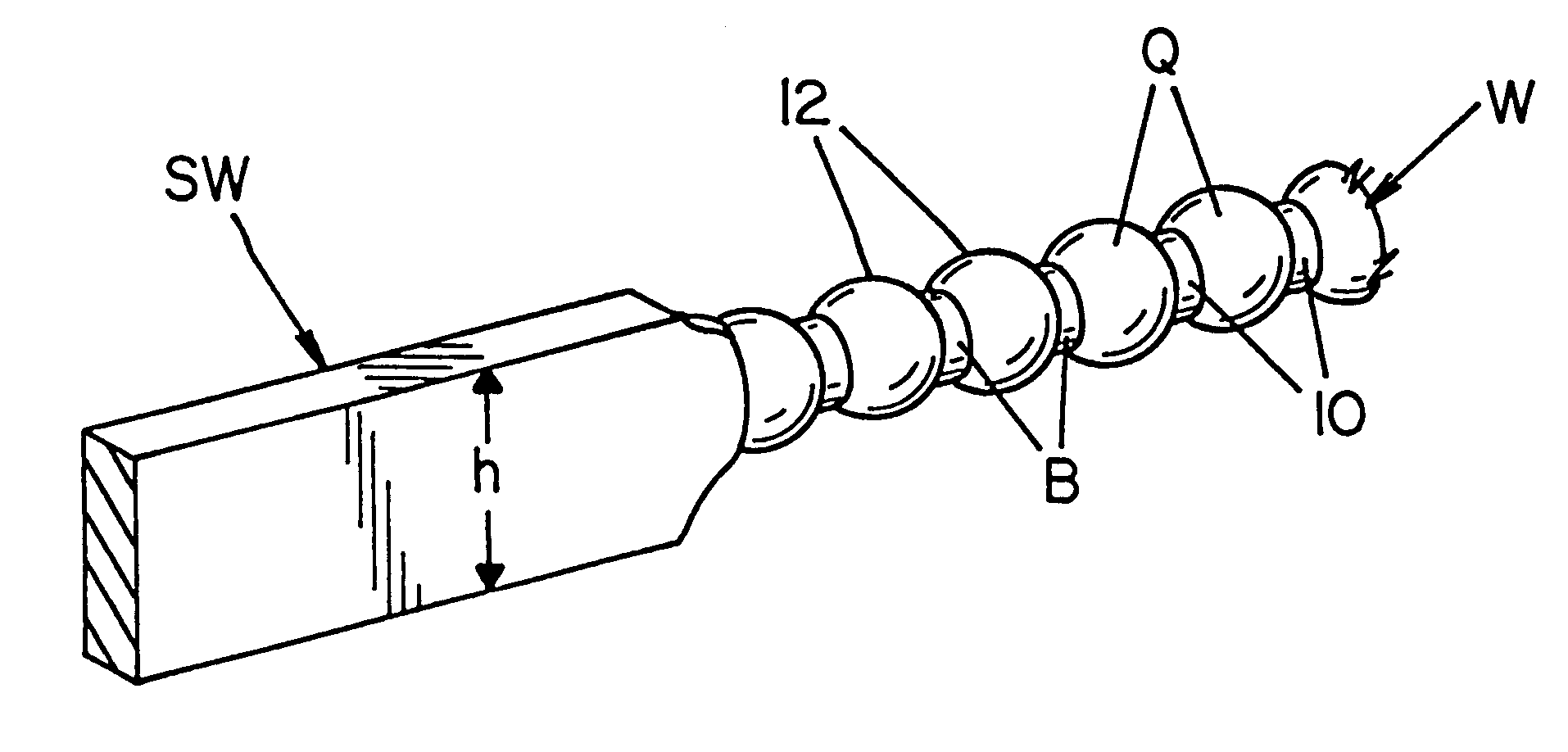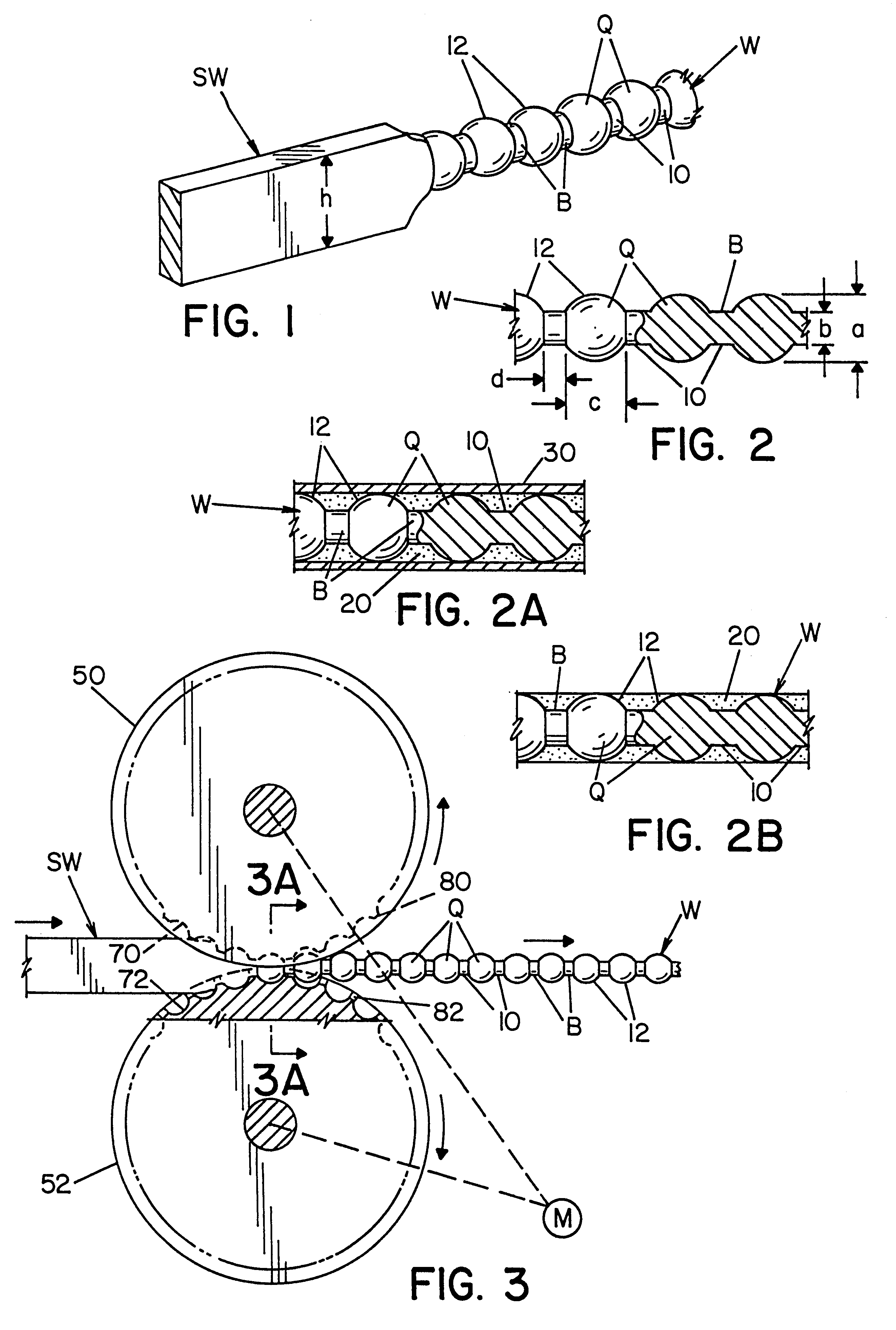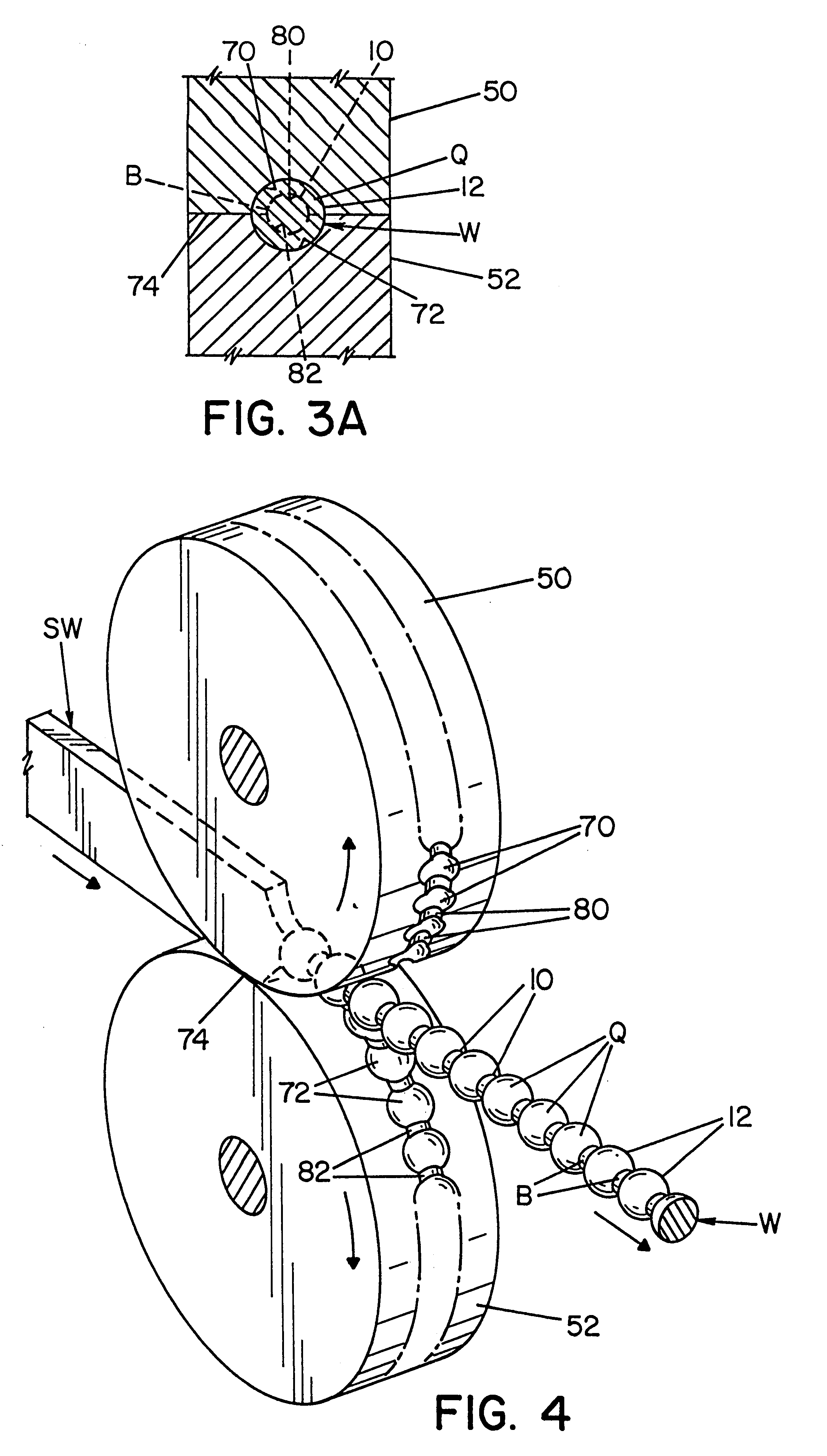Electrode and method of making same
a technology of electrodes and electrodes, applied in the direction of welding/cutting media/materials, manufacturing tools, welding apparatus, etc., can solve the problems of inability to filling or alloying agents, inability to resist moisture contamination and physical damage to fluxes, etc., to reduce reduce the cross-sectional area of wires, and increase resistance in the regions of indentations 10
- Summary
- Abstract
- Description
- Claims
- Application Information
AI Technical Summary
Benefits of technology
Problems solved by technology
Method used
Image
Examples
Embodiment Construction
Referring now to the drawings, wherein the showings are for the purpose of illustrating a preferred embodiment of the present invention and not for the purpose of limiting same, FIGS. 1 and 2 show a welding wire W constructed in accordance with the present invention. Wire W is shown to be formed from a standard rectangular wire SW. Wire SW has a major dimension h which represents the height of the rectangular wire. Wire W has a series of distinct, quantized segments Q separated by connecting or bridging elements B. These bridging elements are formed by a series of axially spaced indentations 10 inward of cylindrical surface 12 for welding wire W. Quantized segments Q can take a variety of shapes from cylindrical to spherical and connecting elements B can have a variety of shapes determined by indentations 10 or other groove like modifications extending inwardly of surface 12. In accordance with the invention, quantized segments Q have a maximum dimension a of wire W. Wire W is forme...
PUM
| Property | Measurement | Unit |
|---|---|---|
| outer diameter | aaaaa | aaaaa |
| length | aaaaa | aaaaa |
| diameter | aaaaa | aaaaa |
Abstract
Description
Claims
Application Information
 Login to View More
Login to View More - R&D
- Intellectual Property
- Life Sciences
- Materials
- Tech Scout
- Unparalleled Data Quality
- Higher Quality Content
- 60% Fewer Hallucinations
Browse by: Latest US Patents, China's latest patents, Technical Efficacy Thesaurus, Application Domain, Technology Topic, Popular Technical Reports.
© 2025 PatSnap. All rights reserved.Legal|Privacy policy|Modern Slavery Act Transparency Statement|Sitemap|About US| Contact US: help@patsnap.com



